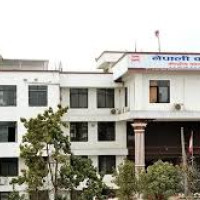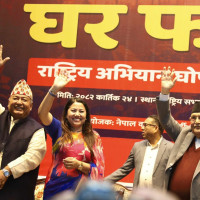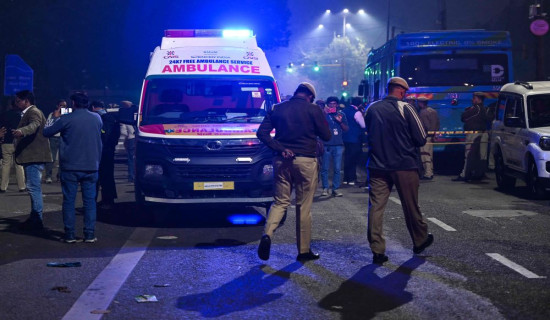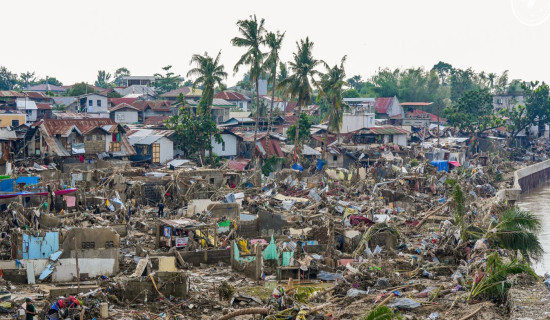- Tuesday, 11 November 2025
Life of a sheep herder in Mustang’s highlands
By Hari Krishna Sharma,Muktinath (Mustang) Oct. 6: When most children of his age were laughing, playing, and going to school, Nara Bahadur Bhandari took on the responsibility of herding sheep some 55 years ago.
At 68, Bhandari has spent more than half a century living among the high pastures of Mustang, tending sheep far from the joys of village and city life.
Bhandari began herding sheep at the age of 13, leaving his home in Sanjhapani, Myagdi, in around 1970
with 69 sheep.
Since then, he has spent 55 years in the highlands, climbing above 4,000 metres every year to graze his flock.
“When I took up my family’s trade, I was studying in grade 9. My young age was passed entirely in the sheepfolds. Even now, I herd sheep,” he says with a quiet smile. “I never got to enjoy village or city life,” he added.
Every May–June, he moves to high pastures like Bokikharka and Battase Yak Kharka, staying there for
about five months.
By September–October, he returns downhill to sell his sheep and celebrate the most joyous festivals Dashain
and Tihar.
Today, his sheep have grown to over 600, with each sheep now selling for Rs. 20,000–24,000 and goats fetching Rs. 35,000–40,000.
But the life of a herder is not easy. Shortage of pastures, harsh weather and predators make the job challenging. “The cold winds and sheep being lost after storms make me question why I continue with this profession,” he said.
To protect his flock, he keeps Bhote kukur (Himalayan mastiff). His dogs accompany him everywhere and guard the flock at night when leopards are most active.
Despite the hardships, Bhandari says sheep herding has brought stability in his life. “Though the work is hard, I manage household expenses and save a little. At least I’m free from financial struggle,” he added.
Among his five sons and three daughters, most prefer to work abroad. Only his eldest son has chosen to follow the family trade.
“I once gave up the chance to go abroad to stay with the sheep. Now I fear that when people like me are gone, these sheepfolds will disappear too,” Bhandari said.
He believes that only subsidies and support can attract the younger generation back to herding. Without such encouragement, he warns, the practice may vanish within a decade, leaving the pastures empty and silent.
“Subsidies, veterinary services and assistance are needed to attract young people back. Otherwise, this tradition may vanish within a decade,” he warns.
Dr. Lal Mani Aryal, Chief of Mustang’s Veterinary Hospital and Livestock Service Centre, said sheep and mountain goats are mainly reared in Lomanthang, Lo-Ghekar Damodarkunda, Waragung and the hill pastures of Thasang and Gharpajhong.
The office provides vaccines and basic healthcare in these high-altitude grazing areas.
Bhandari’s dedication reflects the harsh but rewarding life of Mustang’s herders, preserving a centuries-old tradition amid the rustic beauty of Nepal’s highlands.




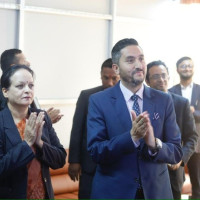

-original-thumb.jpg)
